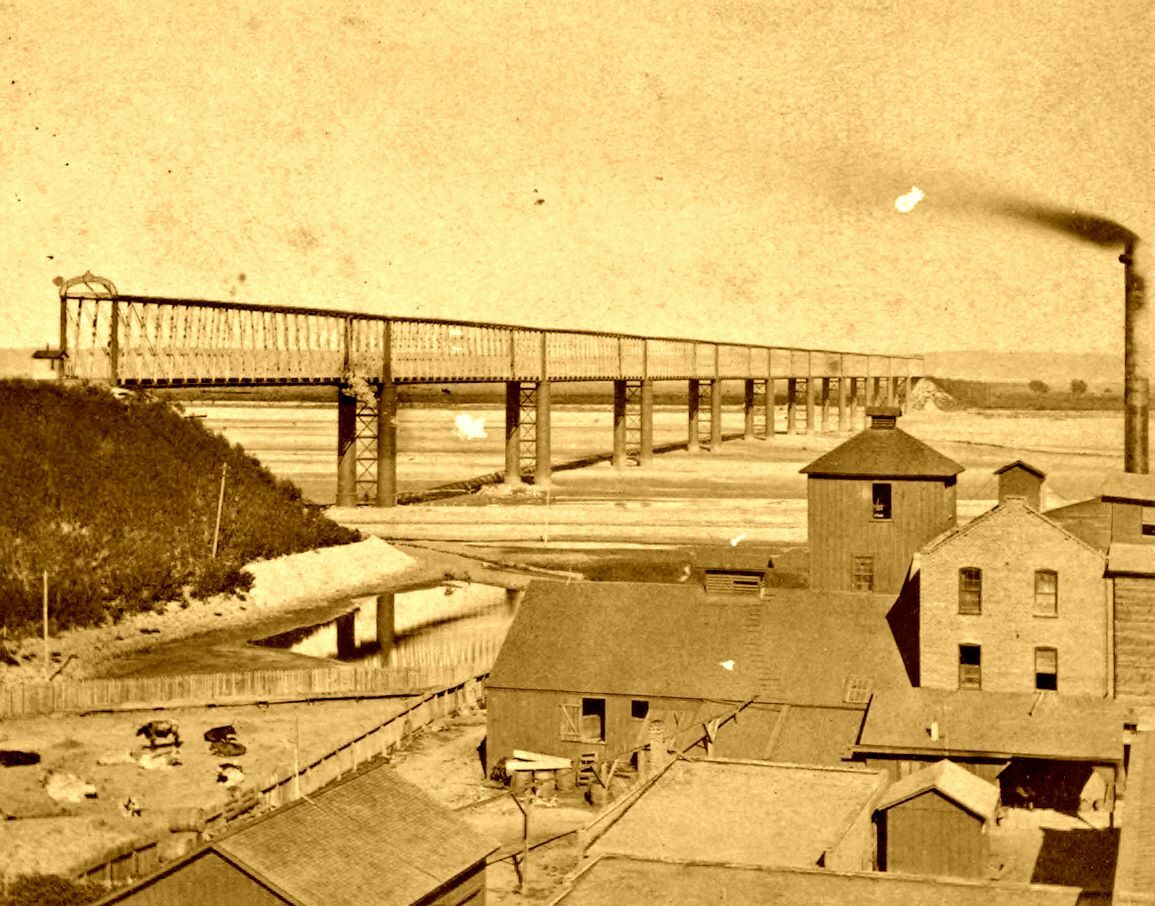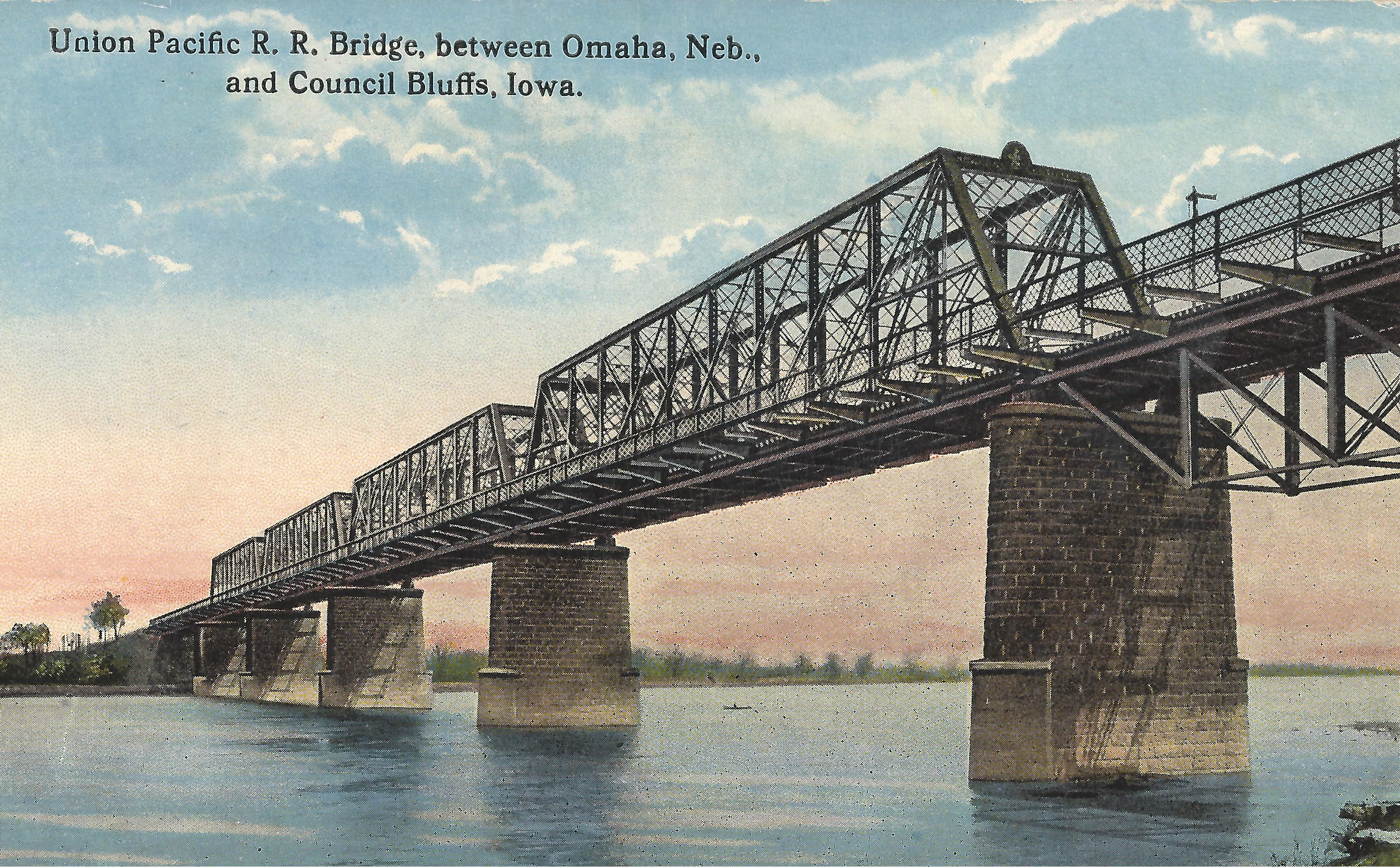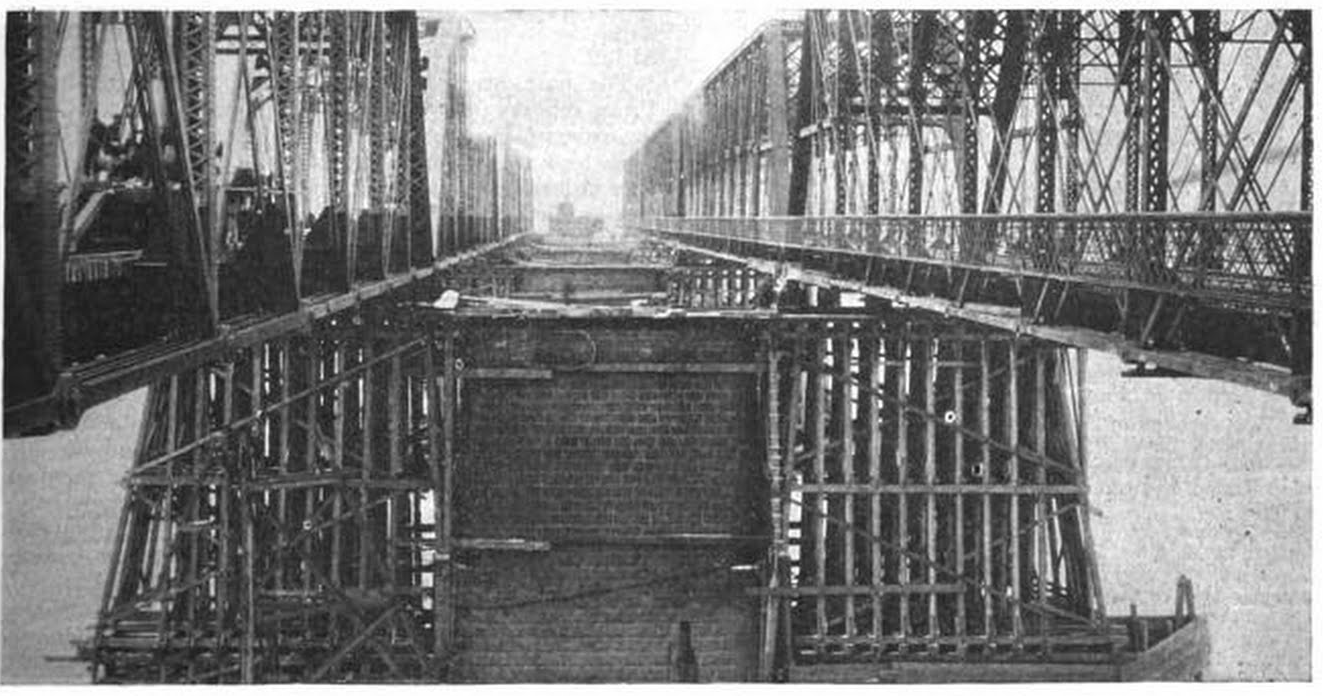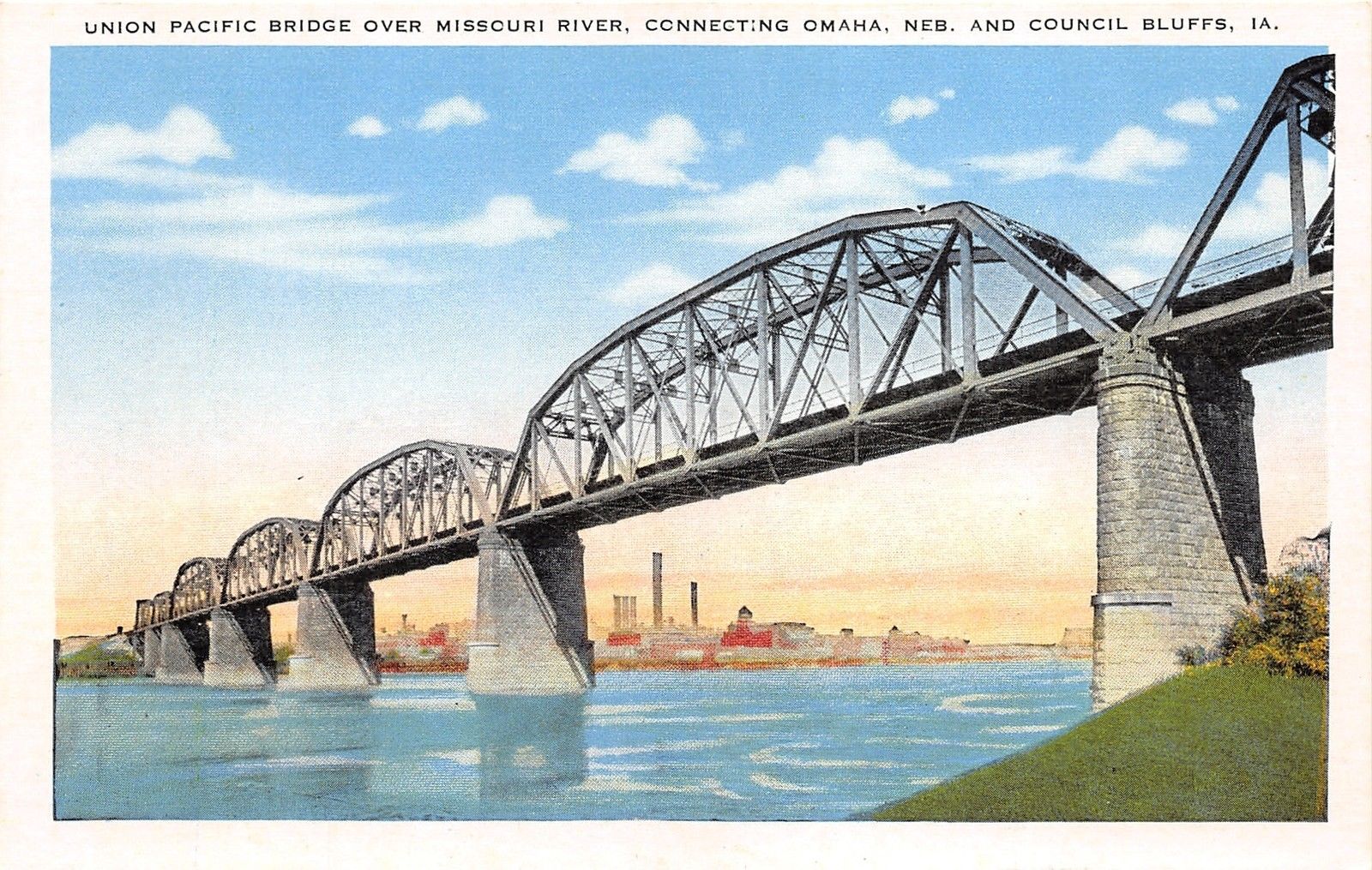Construction began in early 1863, starting in Omaha and progressing westward. Led by Thomas C. Durant, the route picked would follow the Platte River across Nebraska, and into the Rocky Mountains.
The main challenge of the eastern section was connecting Omaha to Fremont, a short distance. Yet the landscape provided many issues, with a hilly terrain.
By 1866, the road would be complete to Fremont. From here, it would continue west. It would reach the Central Pacific Railroad in 1869, at Promontory Point, Utah.
This completed the first transcontinental mainline.
By 1871, the Union Pacific Railroad aspired to build a bridge over the Missouri River into Council Bluffs. This would allow for connections to numerous eastern railroads, heading to Chicago and St. Louis.
The main connection was the Chicago & North Western, which built a mainline across Iowa, and to Chicago.
Because of the traffic this railroad inevitably would receive, an expansion was undertaken in the earliest part of the 20th century. This included double tracking the entire line to Fremont and further west.
The biggest portion was the Lane Cutoff, providing a straight route between Omaha and Waterloo, Nebraska. This opened in 1908.
The line survived the merger era with no alterations. By 1995, Union Pacific would acquire the Chicago & North Western.
Presently, the line is still one of the most significant mainlines in the country. It is known as the Omaha Subdivision, and is still owned by Union Pacific.
11/07/21
Of the many bridges crossing the Missouri River, this is by far one of the most massive.
This large structure carries two tracks of Union Pacific Railroad over the Missouri River, connecting the west to the east.
The first bridge at this location was a large iron truss bridge, built in 1872 by the original American Bridge Company of Chicago.

First bridge at this location
This truss bridge was the first to connect Union Pacific's transcontinental mainline to the eastern railroad network.
By 1888, this bridge would be replaced with another massive through truss bridge, this time double tracked. This structure featured large Whipple Truss spans and stone substructures.
The 1888 bridge became obsolete to heavier trains, and was inevitably replaced.
In 1916, with the United States entry to World War I seeming inevitable, much of the rail network was in need of an upgrade, including this bridge. Reconstructing this bridge was tricky, since traffic could not be stopped long enough to build an entirely new bridge.
Instead, temporary piers were constructed downstream of the existing ones, and new spans were constructed on the temporary piers.
When the entire new bridge was complete on the temporary piers, the old bridge would be shifted onto a second set of temporary piers, and the new bridge put into place. This ceased traffic for less than one day. It is unknown what happened to the old structure, as it may have been reused elsewhere.

Second bridge at this location, courtesy of Photolibrarian on Flickr
The new bridge featured four massive Parker Through Truss spans. Each of these was built as an 8 panel, pin connected structure.
In addition, a trio of 5 panel, riveted Pratt Through Trusses were constructed. Two were located on the Nebraska side, and one on the Iowa side.

Construction of current bridge (left) and shifted second bridge (right)
The remaining approaches were deck girder spans, set onto steel towers. The remaining substructures are original stone from 1888.
In addition to crossing the river, the bridge also crosses a rail yard in Nebraska and a trail in Iowa.
The bridge presently can be accessed from the Iowa side, using a trail near Harrah's Council Bluffs Casino.
The Nebraska side currently cannot be accessed, although plans to develop a trail are underway.

Historic photo of the bridge
The author has ranked this bridge as being regionally significant, due to the landmark status of the structure.
The photo above is an overview from the eastern banks of the Missouri River. The photo below is a pier.
| Upstream | East Omaha Swing Bridge |
| Downstream | Omaha Rail Bridge |
These Pictures Start at varying points in the Series
Detail Photos from October, 2015
